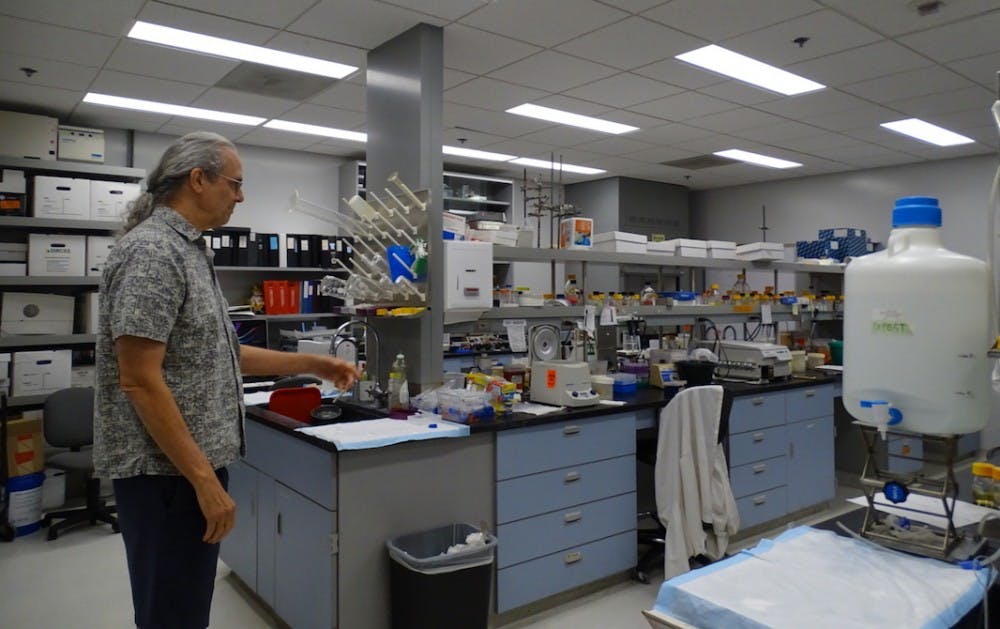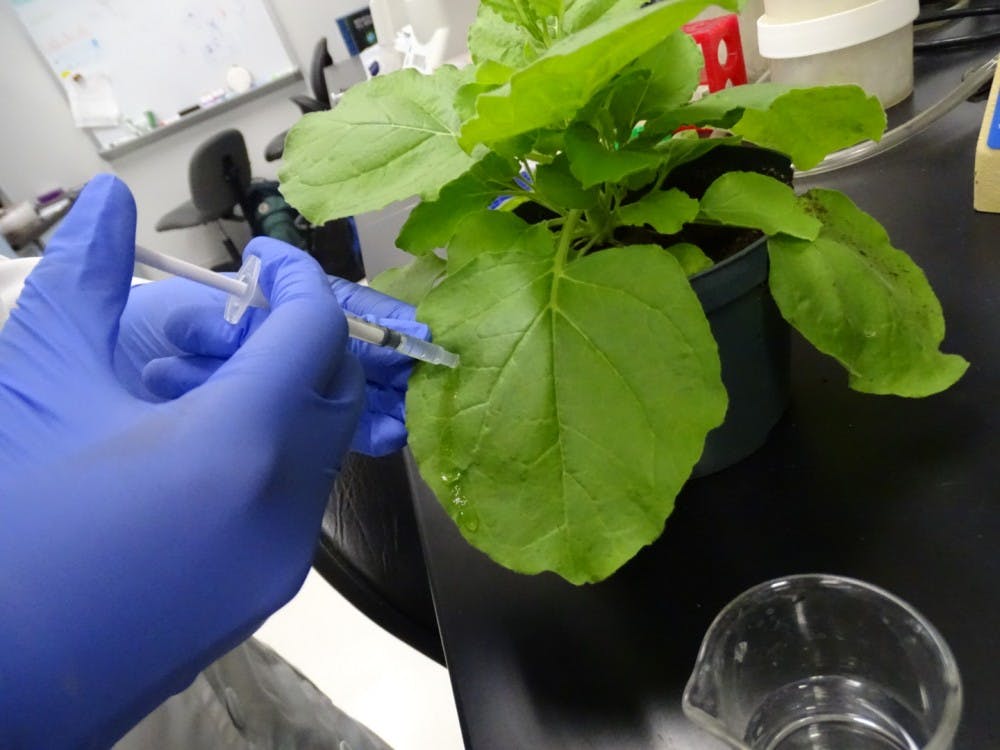ASU researchers have found a way to create an affordable norovirus vaccine that would limit the number of sick days people have to take.
Andy Diamos and Hugh Mason, researchers at the ASU Biodesign Center for Immunotherapy, Vaccines and Virotherapy, have been able to create a vaccine with a a team of ASU scientists that will allow humans to build an immunity to the norovirus, a virus that sweeps the nation every year.
According to the Centers for Disease Control and Prevention, the norovirus is a highly contagious, common disease that causes symptoms such as diarrhea and vomiting.
Mason said that since this virus is stable, it has the ability to live on dry surfaces, which allows it to be easily transmitted through touch or enclosed areas like a cruise ship cabin. He said the norovirus causes uncomfortable symptoms, but does not often result in death,
"It infects (around) 680 million people each year, which is almost one tenth of the entire planet," Diamos said.
Diamos explained how the average human will get the norovirus at least five times in their lifetime because the virus mutates to become a slightly new version of itself, allowing it to infect an individual multiple times.
"Once we obtain a new sequence of the capsid protein that encodes the particular amino acid sequence of the protein ... we can design a plant optimized coding sequence, a DNA sequence, (to) be put into a plant and cause the plant to express that particular protein," Mason said.
He said using plants is important to the speed of production for the vaccine because it allows it to be released to the public faster than by other methods.
The vaccine has been perfected and has already gone through testing, but because of lack of funding, the researchers are unable to continue with a staged trial, which is required to make the vaccine available for public use.
Diamos and Mason said that it would require several billion dollars more in funding to complete the staged trial and that other companies will create a vaccine that is quite a bit more expensive and time consuming to create than their's.
Because they are a small group of researchers and don't have enough funding, like most research projects at ASU, the project is unable to continue past its initial research within their small lab.
"We are just a lab with seven people in it," Diamos said. "We don't really have the ability to do that, so we do a lot of the preliminary research, but somebody bigger has to sort of pick it up and roll with it."
Without this funding the project will be forced to either go dark or be transferred to a company that can afford the research.
According to Mason, Mary K. Estes, a professor at Baylor Medical College, originally cloned and sequenced an RNA genome that could be used in starting the process of creating the vaccine, along with creating a set of diagnostic tests for the vaccine.
Mason and Diamos have gone through over 20 years of testing on insects, tobacco plants and potato plants in order to create a vaccine that is considerably cheaper than that of most other companies.
They said the plant-based vaccine was not particularly hard to create once they were able to decide which one of the genes and proteins to mutate.
In order to create the vaccine, Diamos and Mason started by inoculating the plants with the expression construct. Then, after a few days, they would grind up all of the leaves and extract the protein and the gene required to create the vaccine.
The duo discovered that if a lot of individuals use the plant-based vaccine, then they are able to produce a higher quantity of it for a much cheaper cost.
Charles Arntzen, a retired ASU Professor for the Biodesign Center for Immunotherapy, Vaccines and Virotherapy, said that Diamos and Mason’s research is a “significant step forward in the technology of using plants to make vaccines.”
So why hasn't a vaccine been created for a virus that effects so many?
"Its mainly because it was so hard to grow the virus in the lab and all of the traditional ways that everyone has made all of the different vaccines don't work for this virus," Diamos said.
He said that, thanks to new genetic engineering technologies, new opportunities for testing and development are available.
"Hopefully the norovirus will be able to soon have a vaccine," Diamos said.
Reach the reporter at karichm1@asu.edu and follow @Kellyarichmond3 on Twitter.
Like The State Press on Facebook and follow @statepress on Twitter.





